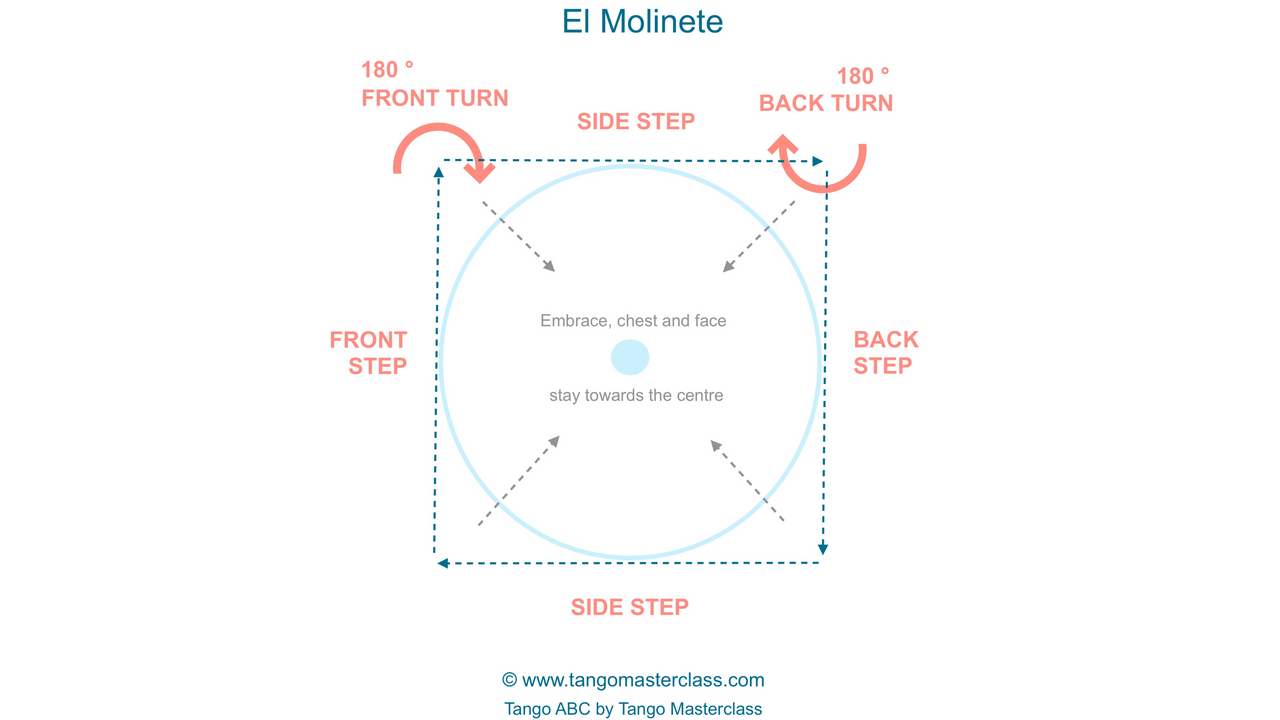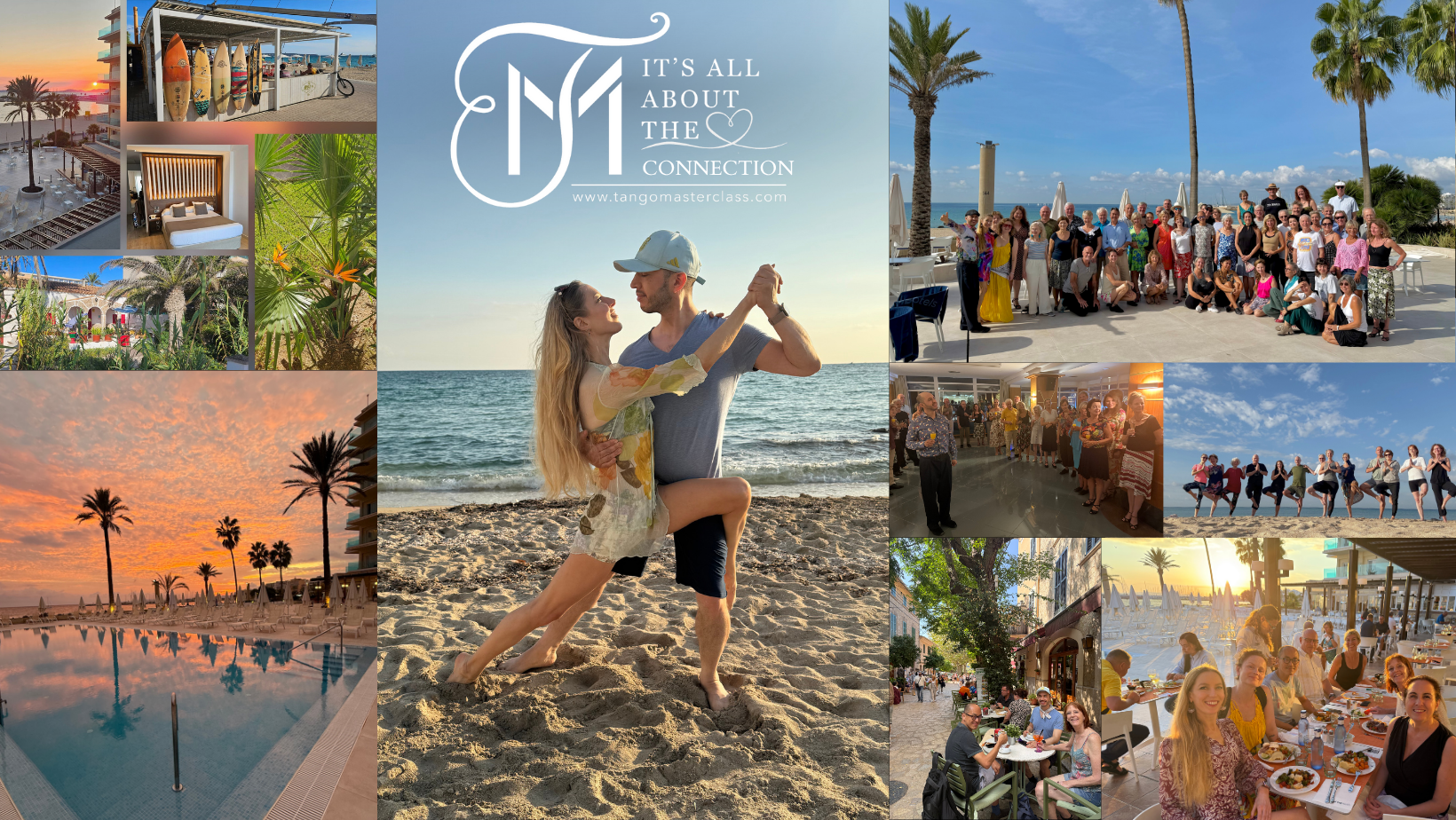El Molinete
Oct 12, 2021
12 October 2021, by Cosima Díaz Campos
El Molinete is the name of the 'windmill' figure in tango. Classically, the molinete consists of a side step, front step, pivot forward, side step, pivot backward, and back step. The molinete can start in any of the four directions. When four steps are made around, we get a giro (full turn). When only three of the four steps are being made, we usually call it a media luna (half moon).
Although there are also combinations in which the leader walks the molinete around the follower, in most variations the follower walks the molinete around the leader in tango. The leader is in the middle, and can dance many different variations while the follower walks the molinete. The leader invites the follower to dance around him by continuously keeping the rotation in his spine to one side. The leaders' steps are build from combinations of changes of weight, steps (with or without sacada), and pivotal turns (with or without enrosques, lapices, and planeos). The leaders steps vary from very calm and simple to ingenious and intricate.
In the image we made for our students, you can see the steps of the follower around the centre. The steps are often in a square. They can also be made in a rectangle or triangle shape, but the system remains the same: side - front - pivot - side - pivot - back. The embrace, chest and face stay towards the centre of the circle. To achieve this, we are rotating in our spine continuously. The only moments in which the spine is in a neutral position (not rotated), is in the centre of the side step.
The molinete is adviced to practice both for followers as well as leaders. Why do leaders need to practice it? For several reasons, to name a few:
1) because it contains essential techniques for tango dancing for leaders
2) because some tango combinations for leaders consist of the molinete pattern, or parts of it.
3) because it is important for a good lead in the giro to fully experience the followers steps; not just in theory, but really feel and experience what movements the follower makes with the whole body from toes to nose, to create the molinete).

Tips for a good Mindset in our Tango Practice
Practice with patience. The progress will often come unnoticed. Remember that every second you spend on dancing with awareness, you will improve your dancing. Even if you don't notice it. Sometimes the change happens at a moment when you least expect it. Two reasons why we often don't notice our pogress:
1) We quickly get used to our own progress, because it happens so slowly and gradually;
2) While we improve, we develop more and more body awareness and musical awareness, and we will therefor become more aware of our shortcomings as a dancer. Consider that as a good thing, be happy when you become more aware of your shortcomings, it is a sign of progress!
Don't focus on the end goal, but focus on the awareness and attention instead: how does your body feel while you make each movement, in each phase. Fluidity, a relaxed and active posture, and comfort are very important. And always go back to the basic building blocks: the posture, balance, the rotation, the transition, the pivot, and try out different combinations of these. Enjoy the process :-)
Tips for Tango Teachers
Start with training the building blocks for the giro with your students: the posture, balance, the rotation, the transition, the pivot. Repeat the building blocks at all levels. Focus with your students on quality of each movement and the flow of the molinete as a whole. Slow and fluent movements are the best way to train. It is not recommended to train with stops and breaks, because we learn most what we train most, so if we want fluidity in our tango dancing, we need to train fluidity in our dance from the very beginning, and throughout our dance life. This means we should be aware of all the different phases of each part of the molinete, that are connected continuously. The metaphore that I use is to "move like an analogue clock, not a digital one". Don't focus the step, but focus on all the phases in between each step. All moments in our dance are equally important, and deserve to be danced with intensity.


